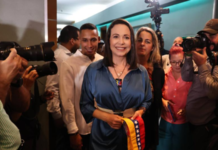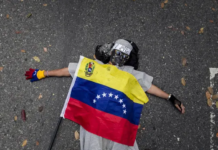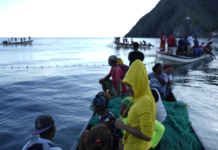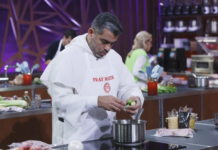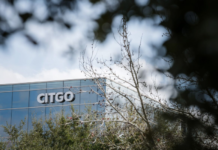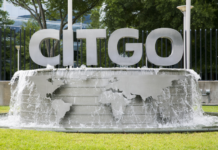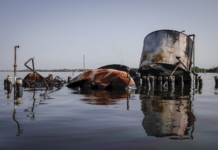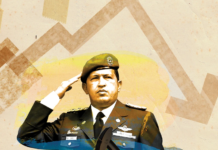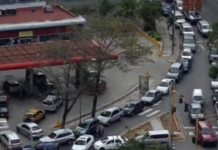[ad_1]
TO MEET Fidel Castro was to notice, first of all, his sheer physical presence. He was tall, erect and had a high, domed forehead that made him look naturally imperious. He was strong: as a youth he was awarded a prize as the best all-round sportsman in Cuba; he received (and rejected) a professional contract to become a baseball pitcher for the New York Giants. He was brave to the point of recklessness; as a boy, he once rode a bicycle straight into a wall to prove his mettle. And he was determined, absolutely convinced of his own rightness, intolerant of contradiction and immune to compromise. These characteristics he had inherited from his father, a Spanish migrant who brought with him to Cuba the innate stubbornness of the gallego and who became a prosperous landowner.
The son, who was born illegitimate in Birán, in rural eastern Cuba, in 1926, added a prodigious ambition for power. Even the Jesuits who taught him saw danger coming in the big, headstrong boy, whose country slang from the cane fields of Oriente marked him out among his urban classmates. The Cuban revolution as it turned out—though not as many of its supporters had originally hoped—was above all an expression of Mr Castro’s will and the unbridled exercise of his massive ego. In his cold-war heyday, he turned his small island into a pocket superpower, fomenting revolution across Latin America, dispatching armies to Africa and brazenly sheltering fugitives, political and criminal, from the United States.
Fidel—he was one of the few world leaders widely referred to by his Christian name—was lucky, too. He might have been killed many times: as an aspiring leader in the gangsterish ambience of Havana student politics; in his quixotic assault on the Moncada barracks in 1953, where some of his followers died; or in the desperate early weeks after the botched landing of the Granma, the overloaded pleasure boat that transported his tiny force of 82 rebels from Mexico three years later. Then there were the hundreds of attempts by the CIA to assassinate him, ranging from the farcical—an exploding cigar—to the near-misses: a dose of botulism inexpertly administered in a milkshake by a barman at the Havana Libre (ex-Hilton) hotel.
Had it not been for a fortuitous amnesty for political prisoners decreed by Fulgencio Batista, the dictator he went on to overthrow, he might have rotted for decades in prison. Then there was Cuba’s island condition, protected from continental armies of liberation (except, as it turned out, Mr Castro’s own). This had allowed Spain to hang on to “its ever-faithful isle” for seven decades after it lost its mainland American empire. It would allow Mr Castro’s regime to survive the fall of the Berlin Wall despite the bankruptcy of his revolution. As it was, the most serious attempt to unseat him, the ill-fated Bay of Pigs expedition organised by the CIA in 1961, became his crowning triumph: submachine-gun in hand, he directed the operation that saw his revolutionary armed forces kill or imprison the invaders, deprived of air support by the hesitation of President John F. Kennedy, before they could leave the beach.
A Marxist of convenience
That was not the Americans’ only mistake. In 1952 Batista, a former army sergeant, staged a coup which ended Cuba’s sole experiment with democracy after just a dozen years. The Eisenhower administration, obsessed with an all but non-existent communist threat in the Caribbean, backed what would be a deeply corrupt and brutal regime. Batista’s coup thwarted Mr Castro’s certain election to Congress and a promising career in democratic politics. Instead, by skilled propaganda and force of will, he turned himself into the undisputed leader not just of a ragtag band of armed guerrillas in the Sierra Maestra but of a broad and politically variegated movement for the restoration of democracy and the 1940 constitution.
The guerrillas in the mountains, together with sabotage and strikes across the island, broke the spirit of Batista’s army and government. Batista himself fled, on New Year’s Eve 1958, taking most of the Central Bank’s reserves of dollars and gold. On arriving in Havana with his band of bearded revolutionaries in January 1959, Mr Castro installed a provisional government headed by a liberal judge. Its initial programme was populist: big wage increases, rent reductions and a radical land reform. But this was merely to buy time, while he built up the armed forces and security services—including the powerful political police, the G2—and cemented an alliance, begun in secret in the sierra, with the Communist Party. Before the revolution was even a year old, the “bourgeois elements” in the government were ousted, or resigned; over the next few months, critical media outlets were silenced one by one. Within six years, all private property, down to corner shops, was expropriated. By then, most of the middle class had been definitively alienated and many of its members had fled to Miami.
Mr Castro did not always hate the United States. He had gone on honeymoon there, buying a white Lincoln Continental and feasting on T-bone steaks. A few weeks after coming to power he visited America again, this time in combat fatigues, but eating hot-dogs like a native and offering to be friends. Eisenhower preferred to play golf, leaving his vice-president, Richard Nixon, to meet Mr Castro and to identify in him “those indefinable qualities that make him a leader of men”.
By then, however, neither side had illusions about the other. In 1958 in the sierra, having watched Batista’s air force drop American-supplied rockets and bombs, he wrote to Celia Sánchez, his closest companion, “I swore that the Americans are going to pay dearly for what they are doing. When this war is over, I’ll start a much longer and bigger war of my own: the war I’m going to fight against them.” For its part, the Eisenhower government was quick to set in train measures aimed at overthrowing him. Nixon thought Mr Castro “either incredibly naive” or “under communist discipline”.
Fidel was a Marxist of convenience, a Cuban nationalist by conviction and a Latin American caudillo by vocation. His hero was José Martí, the Cuban patriot who fought against Spain but was correctly wary of American covetousness towards Cuba. In the Spanish-American War of 1898, the United States hijacked the independence rebellion Martí had started and turned Cuba into a neo-colony. Under the notorious Platt Amendment, it reserved the right to intervene in the island at any time. That was revoked in the 1930s, but American domination of the economy and the vital sugar industry continued until the revolution. It brought development—a large middle class lived well—but also deep inequality.
Fidel embraced Martí’s nationalism and anti-imperialism, but not his belief in social democracy. He turned to communism because it was useful as a tool of absolute power of a kind enjoyed by no run-of-the-mill strongman, coming, as it did, with the shield of Soviet protection (plus Soviet weapons and Soviet oil) for the duration of the cold war. The American trade embargo was even more useful: it allowed him to blame the imperialist enemy for the woeful economic failures of his own central planning.
It was his brother, Raúl (younger by five years), who was the orthodox communist, as well as the quiet organiser who turned the tiny rebel army into a disciplined armed force of 300,000 in the two years after the revolution. It was Ernesto “Che” Guevara, Mr Castro’s Argentine companion in arms, who was the Marxist theoretician.
In the early days, at least 550 (and perhaps 2,000 or more) opponents of the revolution were executed. Many of them were Batista henchmen whose demise was popular. Once the revolution was secure, Mr Castro’s rule was repressive though not especially bloody. Nothing and nobody was allowed to diminish his power. “There are no neutrals,” he declared. “There are only partisans of the revolution or enemies of it.” And the revolution, of course, was Fidel.
Many believe that he allowed Guevara to perish in Bolivia, or could have done more to try to save him, turning an awkward and unbiddable subordinate into a useful myth. Mr Castro was a troublesome ally for the Soviets. He took their money but not always their advice. He first embraced crash industrialisation, then dropped it in favour of the drive for a 10m-tonne sugar harvest. Both involved serious economic reverses. Though sometimes persuaded to decentralise economic decision-making (which usually boosted output) he always ended up concentrating all power in his own hands again.
He gave Cubans first-world education and health services, and did not care about the cost of these to the economy. But he offered neither opportunity nor prosperity, least of all freedom. Dissenters faced a grim choice: the risky crossing to Florida, or the grim jails of Cuba’s gulag. Most chose silence. Eventually Mr Castro would open a safety valve, letting those who might stir up trouble go abroad.
Fidel was the inspirational leader, the man of action, the master strategist, the obsessive control-freak who micromanaged everything from hurricane preparedness to the potato crop. He was, above all, tireless. In marathon sessions, often beginning after midnight and lasting until after dawn, he would interrogate visitors about every facet of the political situation in their country. He loved details—the statistics of food production in every Cuban province or the properties of Chinese electric rice-cookers. He kept them in his head, and would recite them in those interminable speeches.
He was careful to discourage an overt personality cult. He kept his private life, most of his nine children and Dalia del Soto Valle, whom he married in 1980, largely hidden from public view. He promoted younger men only to discard them if they aspired openly to succeed him. His was the overwhelming presence, brooding like a weather system over Cuba’s dilapidated streets; and his was the voice, droning on in televised speeches for hour after hour, alternately rising to a peak of righteous indignation and falling to a whisper of injured innocence. He never listened, said his sister, Juanita, who left for Miami.
The revolution abroad
Mr Castro operated on the world stage as no other Latin American leader ever had since the days of Francisco Miranda and Simón Bolívar, the South American independence heroes of two centuries ago. He turned himself into an important player in the global conflict between the United States and the Soviet Union, between capitalist democracy and communist dictatorship. In seeking the protection of Soviet missiles he came closer than anyone else to turning that ideological confrontation into nuclear war.
Under his leadership, Cuba, an island of just 10m people, became a “Latin American Sparta” (in the words of Jorge Castañeda, a Mexican critic of the revolution). In the 1960s he aided a generation of idealistic young Latin Americans who perished in doomed guerrilla ventures whose main achievement was to help trigger takeovers by bloodstained anti-communist military dictatorships. A decade later Mr Castro dispatched his armies to Africa, to combat apartheid but also to prop up corrupt or repressive (but anti-American) regimes in places like Ethiopia and Angola. In the 1980s he armed and aided leftist revolutionaries in Central America. With the end of the cold war, in the past two decades, it has been Cuban doctors rather than soldiers that have been sent abroad, first as missionaries for Fidel’s revolution and then as earners of scarce foreign currency.
The fall of the Berlin Wall and the collapse of the Soviet Union brought great privation to Cuba. The economy contracted by a third. Many forecast the imminent demise of Mr Castro and his revolution. He responded by declaring a “Special Period in Peacetime”, cover for some limited and pragmatic reforms. He reluctantly allowed Cubans to set up small businesses, such as restaurants, home repairs and farmers’ markets. He also legalised the use of the dollar and sought foreign investment, especially in developing a mass tourism industry. Once again, as it had under Batista, Havana’s hotels became a venue for sex tourism, as young black women sold their bodies to escape the revolution’s privations. Remittances from Cuban-Americans, tourism and nickel mines, run by a Canadian firm, replaced sugar as the mainstay of the economy. The health-care and education systems were tapped for hard-currency earnings, too, with the development of biotechnology and of medical tourism. State companies were given more autonomy to manage their budgets and to trade. All these measures helped Cubans to get by, but they introduced new inequalities and resentments, and loosened the regime’s control over daily life.
Then, unexpectedly, new benefactors appeared, in the form of Venezuela’s Hugo Chávez and, to a lesser extent, a booming China. Venezuelan subsidies grew to match the old Soviet largesse. With the economy growing again, Mr Castro reversed or reined in many of the economic reforms and became far more selective about foreign investment. As he had several times since 1959, he veered back towards Jacobinism, recruiting lumpen youth as “social workers” to wage war against corruption. In 2003, with the world distracted by the American invasion of Iraq, he launched a new political crackdown, arresting and imposing long jail sentences on 78 democracy activists, and executing three would-be migrants who hijacked a ferry in a desperate attempt to get to Florida. Two years later he declared the Special Period over.
Half-life in Havana
One evening in July 2006 Cuban state television broadcast a terse statement from Mr Castro saying that he had to undergo emergency abdominal surgery and was temporarily handing over his powers to a collective leadership headed by Raúl, his deputy. In 2008 Raúl formally replaced Fidel as Cuba’s president, and three years later as first secretary of the Cuban Communist Party. He pushed out Fidel’s proteges and would-be successors, including Carlos Lage, the de facto prime minister. And he proceeded, quietly but methodically, to prepare Cuba for the time when a Castro would no longer be in charge.
Raúl is temperamentally Fidel’s opposite, a tidy, practical man, lacking his brother’s messianic streak. He is Sancho Panza to Fidel’s Don Quixote. They even looked the parts (Raúl is said to keep statues of Cervantes’s heroes at his house). There were no more late-night meetings. Raúl announced economic reforms (officially called “updating”) that abolished many of the petty restrictions suffered by Cubans, who could once again buy and sell houses and cars, stay in tourist hotels and have access to mobile phones and the internet. He cautiously began to dismantle Fidel’s centrally planned economy: more than 500,000 Cubans now work in a budding private sector of small businesses and private farmers. The island began to move inexorably towards a mixed economy. Some of Raúl’s advisers talked enthusiastically of the Chinese and Vietnamese models.
Fidel didn’t think much of that. China was a decadent consumerist society that had lost its values and its commitment to preserving equality, he thought. But he admitted to a foreign visitor, in an unguarded moment, “the Cuban model doesn’t even work for us any more”. Fidel kept his criticisms largely private. He wrote a newspaper column in Granma, the official organ, for a while, but its main subject matter was his increasingly incoherent ramblings about what he saw as the apocalyptic problems facing the world. He became a spectral presence in his compound in Siboney, a leafy enclave in the west of Havana of mansions built by the sugar barons he had expropriated. He was occasionally photographed with visiting leaders looking increasing frail and doddery. But he had outlasted ten American presidents and all his enemies.
True, he lived long enough to watch his revolution start to be dismantled. He even saw Cuba restore diplomatic relations with the United States in 2015 and an American president, Barack Obama, visit Havana and broadcast a call for the Cuban people “to choose their government in free elections”. Of course he did not approve. “Cuba’s president has taken steps in accordance with his prerogatives and powers,” he wrote stiffly in a letter published in 2015. But, he added, “I don’t trust the policy of the United States, nor have I exchanged any words with them,” he growled.
No other man in the 20th century had ruled as long or, through a mixture of charisma and tyranny, dominated his country so completely. On one hot summer night during the days of penury that followed the collapse of the Soviet Union, a crowd of disgruntled youngsters on Havana’s malecón, the seafront drive, threatened to overwhelm the police and start a riot. Fidel appeared out of the night, and talked them out of it. Even many of those Cubans who abhorred him were in awe of him. That will not apply to any of his successors, not even Raúl.
[ad_2]
fuente
